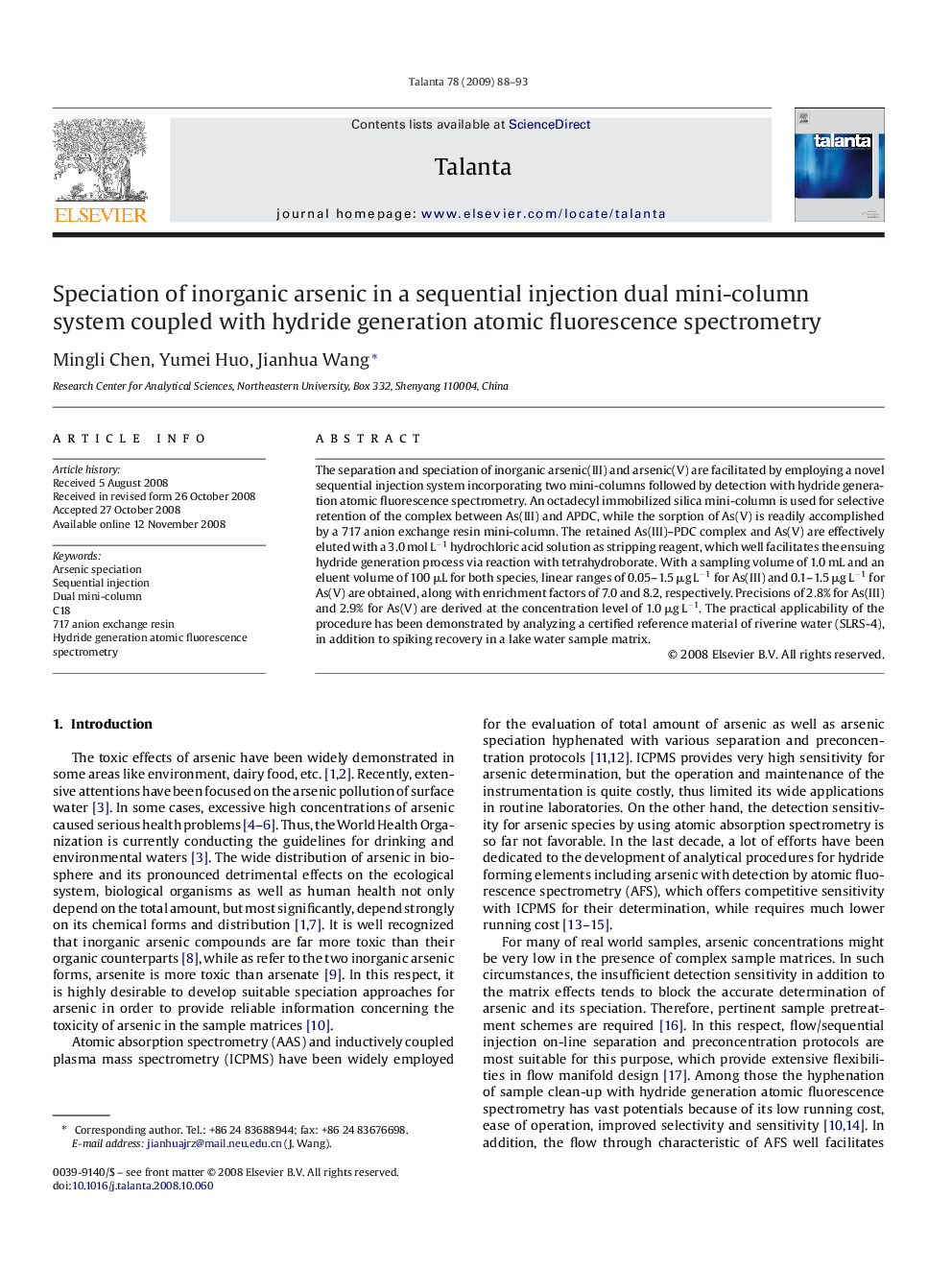| Article ID | Journal | Published Year | Pages | File Type |
|---|---|---|---|---|
| 1245101 | Talanta | 2009 | 6 Pages |
The separation and speciation of inorganic arsenic(III) and arsenic(V) are facilitated by employing a novel sequential injection system incorporating two mini-columns followed by detection with hydride generation atomic fluorescence spectrometry. An octadecyl immobilized silica mini-column is used for selective retention of the complex between As(III) and APDC, while the sorption of As(V) is readily accomplished by a 717 anion exchange resin mini-column. The retained As(III)–PDC complex and As(V) are effectively eluted with a 3.0 mol L−1 hydrochloric acid solution as stripping reagent, which well facilitates the ensuing hydride generation process via reaction with tetrahydroborate. With a sampling volume of 1.0 mL and an eluent volume of 100 μL for both species, linear ranges of 0.05–1.5 μg L−1 for As(III) and 0.1–1.5 μg L−1 for As(V) are obtained, along with enrichment factors of 7.0 and 8.2, respectively. Precisions of 2.8% for As(III) and 2.9% for As(V) are derived at the concentration level of 1.0 μg L−1. The practical applicability of the procedure has been demonstrated by analyzing a certified reference material of riverine water (SLRS-4), in addition to spiking recovery in a lake water sample matrix.
